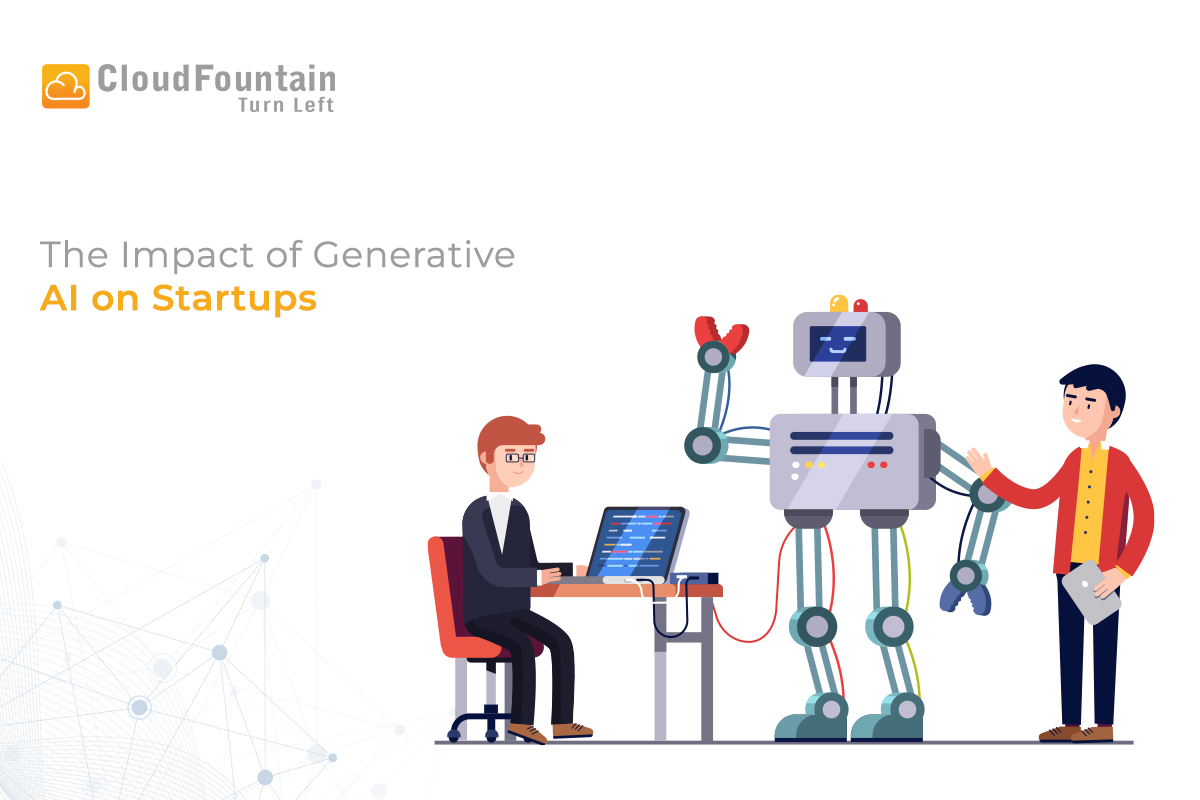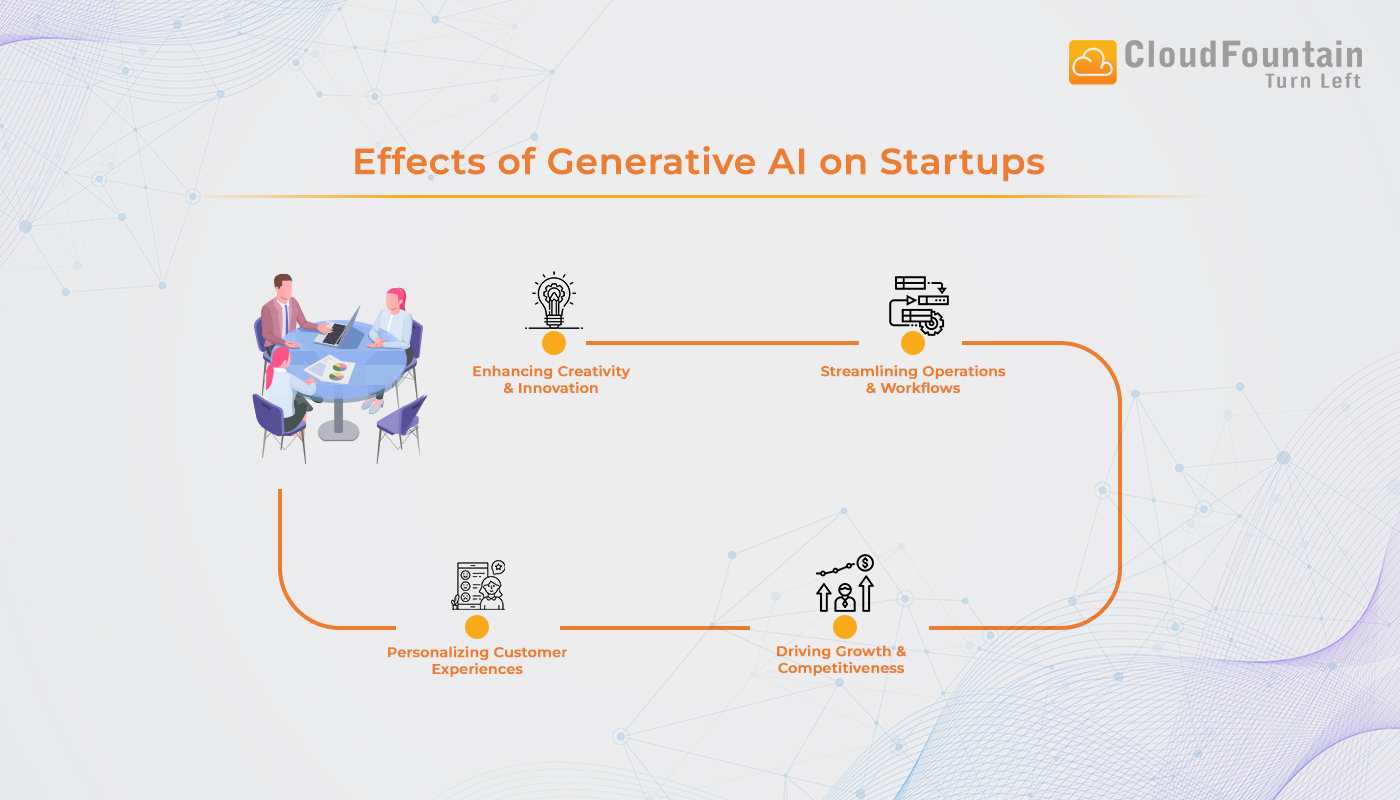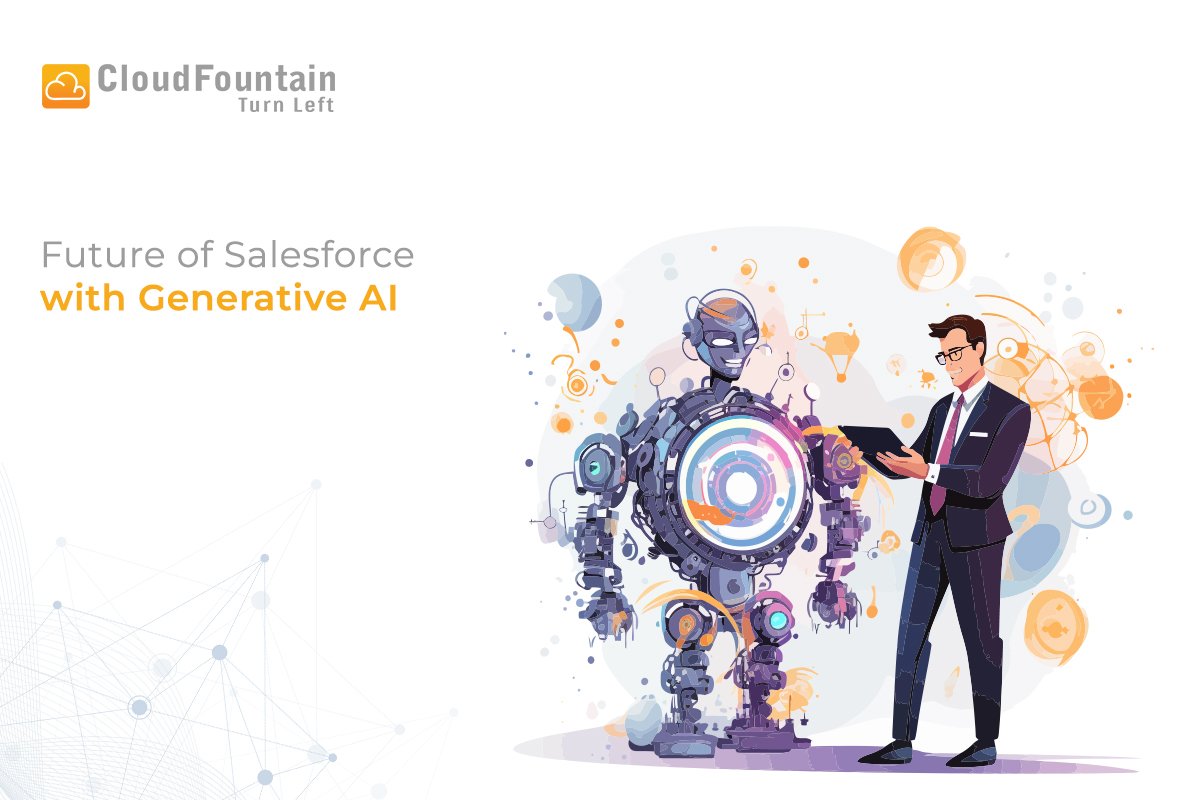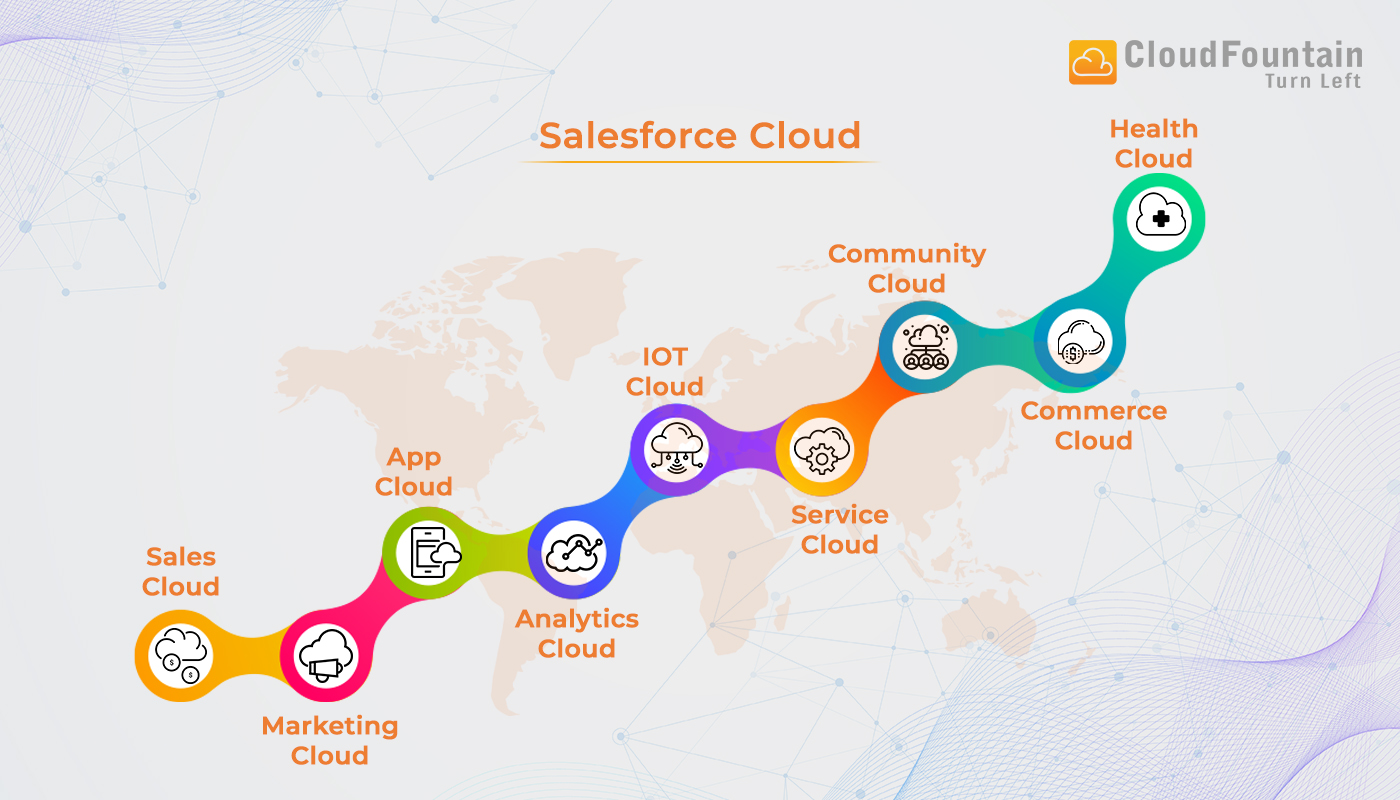Salesforce Einstein Generative AI is your partner to enhance personalised customer experience. Get ready to travel to a place where creativity and data collide to create captivating experiences from consumer encounters.
Salesforce Einstein is the leader in personalised engagement in a world where every connection counts. He creates a captivating tapestry of content that is suited to each individual. So buckle up, adventurer, and get ready to discover all that Salesforce Einstein Generative AI has to offer.
Now let’s get the adventure started!
Understanding Salesforce Einstein
Salesforce Einstein Generative AI revolutionises customer interactions by seamlessly integrating data, context, and personalised content generation. Here’s a breakdown of how it works:
- Connect: Quality content begins with quality data. Salesforce Einstein leverages pre-built connectors to seamlessly integrate external data sources into Salesforce. Through the Data Cloud, this data undergoes cleansing and preparation, becoming readily available for Salesforce Einstein’s use.
- Prompt: With the connected data stored in Salesforce, Salesforce Einstein gains an understanding of your business context. By grounding the large language model with instructions and relevant data, Salesforce Einstein ensures that generated responses are tailored to your specific needs. Utilising various grounding techniques, Salesforce Einstein refines its comprehension using real data.
- Trust Layer: Embedded within the platform is the Trust Layer, ensuring data security. When accessing customer data, stringent security measures are employed to protect sensitive information. Post-generation, data is immediately masked and forgotten by the AI model, ensuring confidentiality.
- Generate: Leveraging insights gleaned from your company and customer data, Salesforce Einstein generates personalised content across various channels. Whether you’re a customer service representative, salesperson, or programmer, Salesforce Einstein provides tailored recommendations and automates tasks to enhance productivity.
For customer service reps, Salesforce Einstein offers real-time response recommendations across multiple channels. Sales reps benefit from personalised outreach messages, while programmers can automate code generation. Commerce websites can leverage Salesforce Einstein to craft compelling product descriptions.
Einstein’s ability to create personalised experiences in every piece of content empowers businesses to build stronger customer relationships. By impressing customers with tailored experiences, Salesforce Einstein ensures that each interaction leaves a lasting impact.
Discover how AI transforms possibilities into realities, propelling your business toward unparalleled success.
- Einstein for Sales: Predictive insights for revenue growth.
- Einstein for Service: Automated support with personalised experiences.
- Einstein for Marketing: Targeted campaigns that drive engagement.
- Einstein for Lightning Platform: AI-infused applications for enhanced user experiences.
- Einstein for Analytics: Data-driven decisions with predictive modelling.
- Einstein for Commerce: Personalised e-commerce journeys for increased conversions.
Features of Salesforce Einstein

Customer engagement is revolutionised by Salesforce Einstein Generative AI, which integrates data, AI capabilities, and CRM functionalities effortlessly. The Salesforce Einstein product catalogue is divided into the following sections by this guide:
Einstein for Sales
This suite of tools is designed to empower sales teams with actionable insights and predictive analytics. It includes features such as lead scoring, opportunity insights, and predictive forecasting, enabling sales professionals to identify the most promising leads, prioritise opportunities, and forecast revenue with greater accuracy.
Related: How to Set up Sales Cloud Einstein in Salesforce?
Einstein for Service
Geared towards enhancing customer service operations, this set of tools leverages AI to streamline support processes, automate case routing, and deliver personalised customer experiences. With features like intelligent case classification, sentiment analysis, and Chatbot integration, service teams can resolve issues faster, anticipate customer needs, and drive customer satisfaction.
Einstein for Marketing
Marketers can harness the power of AI to deliver targeted, personalised campaigns across multiple channels with Salesforce Einstein for Marketing. This suite includes capabilities such as predictive segmentation, email marketing automation, and content recommendations, enabling marketers to optimise engagement, drive conversions, and maximise ROI.
Einstein for the Lightning Platform
Developers can infuse AI capabilities into their custom applications using Salesforce Einstein for the Lightning Platform. This suite provides pre-built AI models, APIs, and tools for building intelligent applications, enhancing productivity, and delivering innovative user experiences.
Einstein for Analytics
Unlock the full potential of data with Salesforce Einstein for Analytics. This suite offers advanced analytics and AI-powered insights, enabling organisations to uncover hidden patterns, make data-driven decisions, and drive business growth. Features include predictive modelling, automated insights, and natural language processing for querying data.
Einstein for Commerce
Transform e-commerce experiences with Salesforce Einstein for Commerce. This suite leverages AI to personalise product recommendations, optimise pricing strategies, and improve conversion rates. With features like predictive search, dynamic pricing, and personalised merchandising, retailers can deliver tailored shopping experiences that drive customer loyalty and revenue.
Each section of the Salesforce Einstein product catalogue is tailored to address specific business needs and objectives, empowering organisations to harness the power of AI across the entire customer lifecycle – from sales and service to marketing, analytics, and commerce.
Benefits of Salesforce Einstein
Salesforce Einstein, with its dual capabilities of predictive AI and generative AI, offers a myriad of benefits to businesses. Predictive AI leverages existing data to forecast future outcomes, empowering organisations to make informed decisions and strategize effectively.
On the other hand, generative AI enables the creation of original content, spanning text, images, and videos, fostering creativity and innovation. By seamlessly integrating data, AI, CRM, and trust, Salesforce Einstein elevates revenue generation, strengthens customer relationships, and adds tangible business value.
The result? Highly personalised experiences that resonate with customers, driving engagement, loyalty, and ultimately, business success. With Salesforce Einstein, businesses unlock the power of AI to propel their growth and competitive advantage in today’s dynamic marketplace.

- Enhanced Productivity: By automating repetitive tasks and providing intelligent recommendations, Salesforce Einstein enables businesses to streamline their workflows and boost productivity across the organisation. Whether it’s sales, marketing, customer service, or IT, Salesforce Einstein’s AI capabilities empower users to focus on high-value activities while AI handles the rest.
- Personalised Experiences: In today’s hyper-connected world, customers expect personalised experiences tailored to their unique preferences and needs. Salesforce Einstein enables businesses to deliver hyper-personalised experiences at every touchpoint, from targeted marketing campaigns to proactive customer support, driving customer satisfaction and loyalty.
- Data-driven Decision Making: With Salesforce Einstein’s predictive analytics capabilities, businesses can harness the power of data to make informed decisions and drive strategic initiatives. By leveraging AI-driven insights, organisations can identify emerging trends, forecast future outcomes, and stay ahead of the competition in a rapidly evolving market landscape.
- Scalability and Flexibility: Whether you’re a small startup or a global enterprise, Salesforce Einstein offers scalability and flexibility to meet your evolving business needs. With its cloud-based architecture and modular design, Salesforce Einstein seamlessly integrates with existing Salesforce applications and can be customised to suit your specific requirements, ensuring maximum ROI and long-term success.
- Continuous Innovation: As AI technology continues to evolve, so does Salesforce Einstein. With regular updates and new features introduced by Salesforce, businesses can stay at the forefront of innovation and leverage the latest advancements in AI to drive business growth and stay ahead of the competition.
You can see why integrating Salesforce CRM into your company can enhance your customer relationship. Integrating Salesforce CRM is not that simple. The varied tools offered by Salesforce CRM and integrating all of them may not be the right fit for every organisation. CloudFountain understands this struggle and has a Salesforce QuickStart Package.
Related: How to Implement Salesforce Einstein: A Guide to Unleashing AI in your CRM
Salesforce QuickStart Packages expedite Salesforce implementation with predefined services for speedy setup. Tailored for small businesses, nonprofits, and growing companies, they offer cost-effective solutions with minimised risks and expert guidance. With a focused scope, these packages ensure a successful outcome and improved user adoption through basic training.
They include data migration support, customization, and documentation, accelerating ROI. Each package delivers a configured Salesforce solution, scalable foundation, best practices, automation, and tailored reports. Remote or hybrid engagement options are available, along with end-user and admin training, ensuring long-term success and a roadmap for future transformation. Let CloudFountain be your partner for the successful Salesforce Integration into your business.
Final Thought
In conclusion, Salesforce Einstein represents the next frontier of AI-driven innovation, empowering businesses to unlock the full potential of their data, automate processes, and deliver exceptional customer experiences.
By harnessing the power of predictive analytics, machine learning, natural language processing, and other AI capabilities, organisations can transform their operations, drive growth, and stay ahead in today’s rapidly evolving digital landscape.
Whether you’re a small business looking to scale or a large enterprise seeking to innovate, Salesforce Einstein provides the tools and capabilities you need to succeed in the age of AI.







